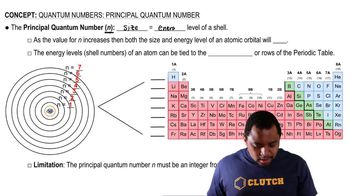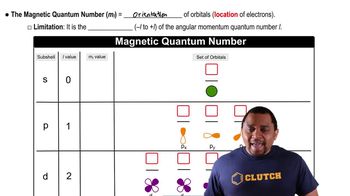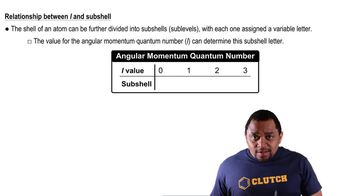Here are the essential concepts you must grasp in order to answer the question correctly.
Quantum Numbers
Quantum numbers are a set of numerical values that describe the unique quantum state of an electron in an atom. The four quantum numbers include the principal quantum number (n), azimuthal quantum number (l), magnetic quantum number (ml), and spin quantum number (ms). Each number provides specific information about the electron's energy level, shape, orientation, and spin.
Recommended video:
Magnetic Quantum Number (ml)
The magnetic quantum number (ml) determines the orientation of an orbital in space and can take on integer values ranging from -l to +l, where l is the azimuthal quantum number. For example, if l = 1 (p subshell), ml can be -1, 0, or +1. This concept is crucial for understanding how orbitals are arranged in a magnetic field and how they interact with other orbitals.
Recommended video:
Subshells and Their Designations
Subshells are divisions of electron shells that contain orbitals of the same type. They are designated by the letters s, p, d, and f, corresponding to different values of l (0, 1, 2, and 3, respectively). In this context, the 2p subshell has l = 1, allowing for ml values of -1, 0, and +1, while the 3p subshell also allows ml = -1, making them relevant to the question.
Recommended video:
Angular Momentum Quantum Number and Subshell




